Trek Slash 2017: A very different package, specifically for enduro rider
The most obvious changes for 2017 are the switch to a carbon frame from the aluminum chassis on the previous iteration of the Slash and the move to 29” wheels from 27.5”

by Stuart Kernaghan
The Trek Slash has been part of the company’s long-travel line for a number of years now, but on paper it wasn’t all that different from the all-mountain Remedy. Trek addressed that issue for 2017 by clearly defining the Slash as an enduro bike, updating the frame material, angles, suspension technology and wheel size.
Trek officially unveiled the new bike at Crankworx Whistler 2016 and Canadian Cycling Magazine had a chance to get the lowdown on this enduro machine.

The most obvious changes for 2017 are the switch to a carbon frame from the aluminum chassis on the previous iteration of the Slash and the move to 29” wheels from 27.5”. Carbon because Trek is positioning the bike as a premium product and 29” because the company feels it’s the best size for enduro riding and racing.
Complementing the change to wagon wheels is the move to 148-mm Boost rear spacing; the fork also gets Boost-ed to 110-mm. Rear travel drops from 160-mm to 150-mm, and is now paired with a 130/160-mm travel adjust fork to keep the front end lower on climbs. There is no front derailleur mount on the new Slash, so you’re committed to a 1x drivetrain system.

Another big change for the new Slash is the fact that Trek ditched its venerable Full Floater suspension design. Trek says that Full Floater was developed a number of years ago to overcome performance shortcomings of air shocks at that time, but shock technology has evolved and performance has improved enough to make Full Floater unnecessary.
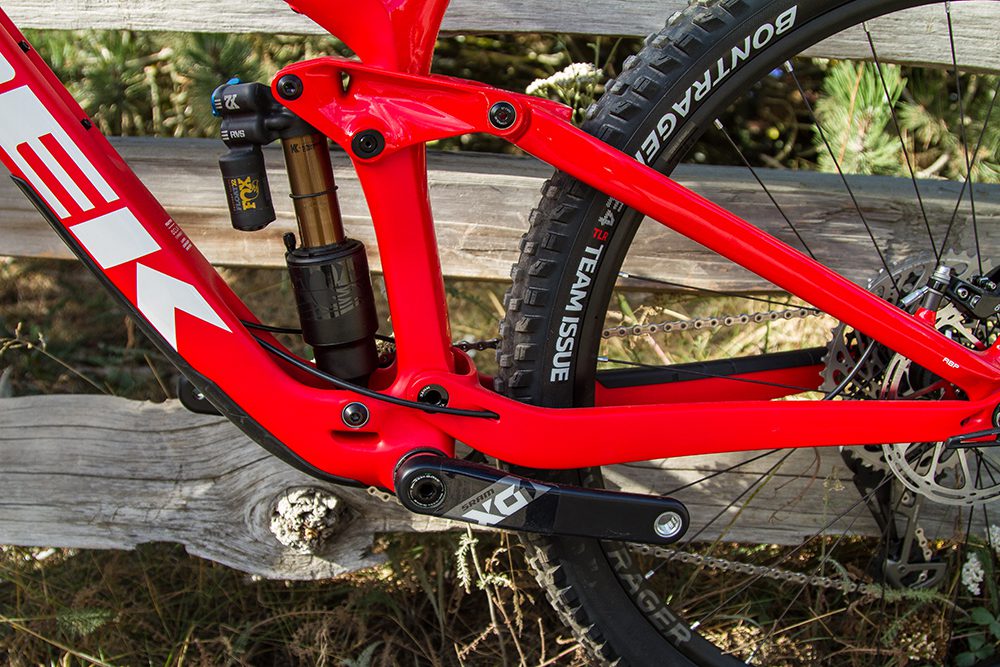
Changing to a fixed-shock mount also allowed Trek to play with the frame and chainstay shapes, accommodate 29” wheels and 150-mm of travel and make more room for larger shocks. According to Trek, all of that is particularly beneficial on long-travel bikes like the Slash but isn’t really necessary on short and mid-travel bikes like the Fuel EX and Remedy – which is why it’s still used on those platforms.
Trek has always been big on proprietary technology, and it shows up on the Slash in the form of the new Straight Shot frame design and Knock Block headset/frame protection system. Straight Shot is Trek’s name for a straight and enlarged down tube, which is supposed to increase front end and bottom bracket stiffness.

That design change resulted in clearance issues on the down tube, so Trek addressed that with the Knock Block stop chip system. A keyed headset cap prevents the fork from turning too far and a bumper on the bottom of the downtube provides extra carbon protection. Bontrager designed a new stem to go with the system but you don’t have to run it; it’s possible to use another stem and a clamping headset spacer that is part of the system.
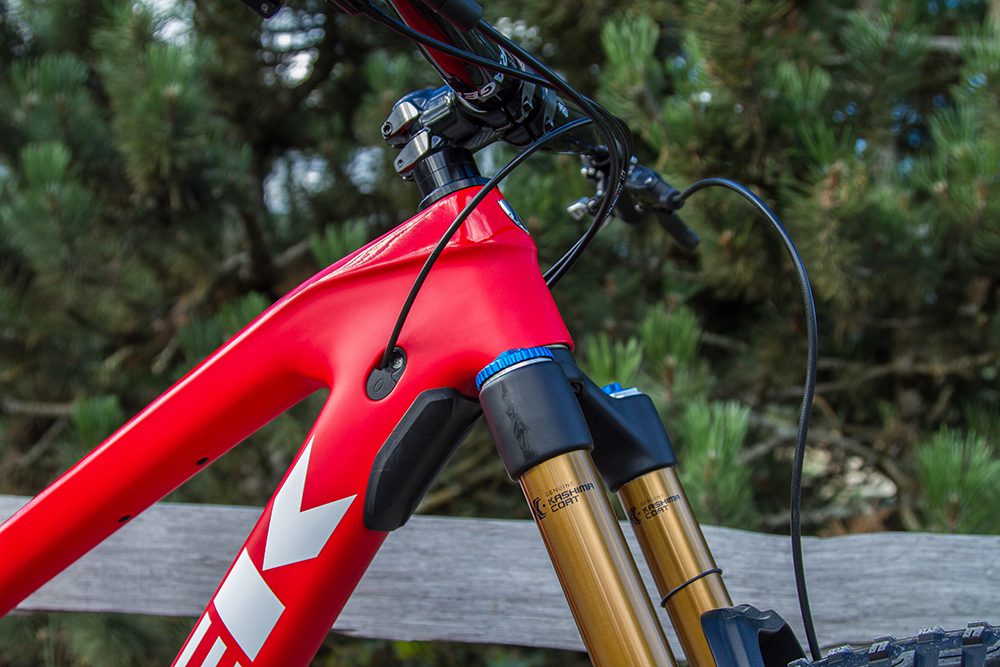
There are just two models of the new Slash available, plus a frame-only option. The base 9.8 model comes with a RockShox Lyrik RC fork, a RockShox Super Deluxe RC3 shock, Bontrager Line Comp 30 wheels with SE4 Team Issue 29×2.40″ tires, a 10-42T 11-speed cassette paired with SRAM X1 32T crankset, SRAM X1 rear derailleur and SRAM Guide R hydraulic disc brakes.
House brand Bontrager parts include the Line 35-mm handlebar, Line stem and Drop Line 125 cable-activated dropper post, which is the company’s first foray into height adjustable seat posts. Trek has a lot of confidence in the post, choosing to spec it on its premium model Slash instead of going with a more proven product like the RockShox Reverb.

The premium 9.9 RSL version of the Slash gets a bump in the level of components, as well as SRAM’s new Eagle 1×12 drivetrain. The parts mix includes a Fox Factory 36 TALAS fork, Fox Factory Float X2 shock, Bontrager Line Elite 30 wheels with SE4 Team Issue 29×2.40″ tires, a 12-speed 10-50T cassette paired with a SRAM X01 Eagle 32T crankset, X01 Eagle rear derailleur and shifter, SRAM Guide Ultimate carbon hydraulic disc brakes, a Bontrager Line Pro carbon bar, the Knock Block headset, a Line Pro stem and Drop Line post.
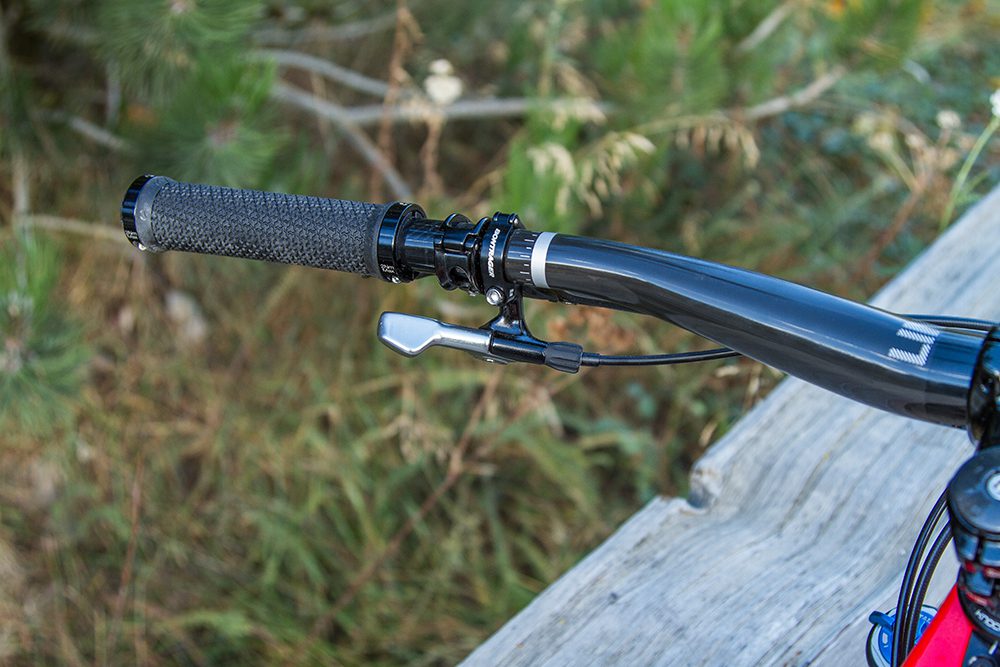
The carbon fiber frame set comes with a Fox Factory Float X2 shock, Knock Block headset and Line Pro 35-mm stem which is designed to go with the new headset.
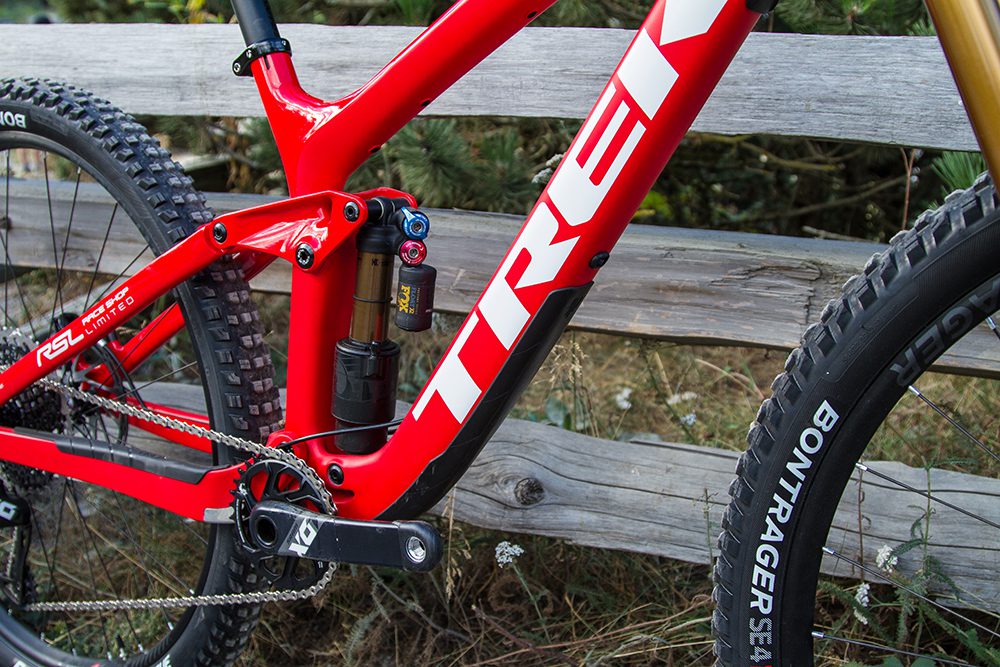
As with previous iterations of the Slash, the 2017 version has Trek’s Mino Link adjustable geometry system. Riders can flip a chip on the rocker arm of the rear suspension to switch between the low and high settings. That changes the bottom bracket height from 34.5-mm to 35.2-mm and the head angle from 65.1 degrees to 65.5 degrees. Effective seat tube angle changes from 73.6 to 74.1 degrees with the swap.

Something else that people might be wondering – the new Slash is not compatible with plus-sized 27.5” wheels and tires. They might fit, but Trek says wheels of that size will have a negative affect on handling and speed. You can fit a 29×2.6” tire in the frame, though, so that should keep most people happy.
The new Slashes are available in 15.5, 17.5, 19.5 and 21.5” sizes. Pricing as been set at US$5,500 for the Slash 9.8, $9,000 for the Slash 9.9 RSL and $3,700 for the frame set. All will be available in October 2016.
I got to ride the last iteration of the Slash, and actually test it. On paper, the new version has a lot of things going for it that should make it very appealing to enduro racers. The carbon frame will help shed some heft from the aluminum version which wasn’t exactly feather weight.
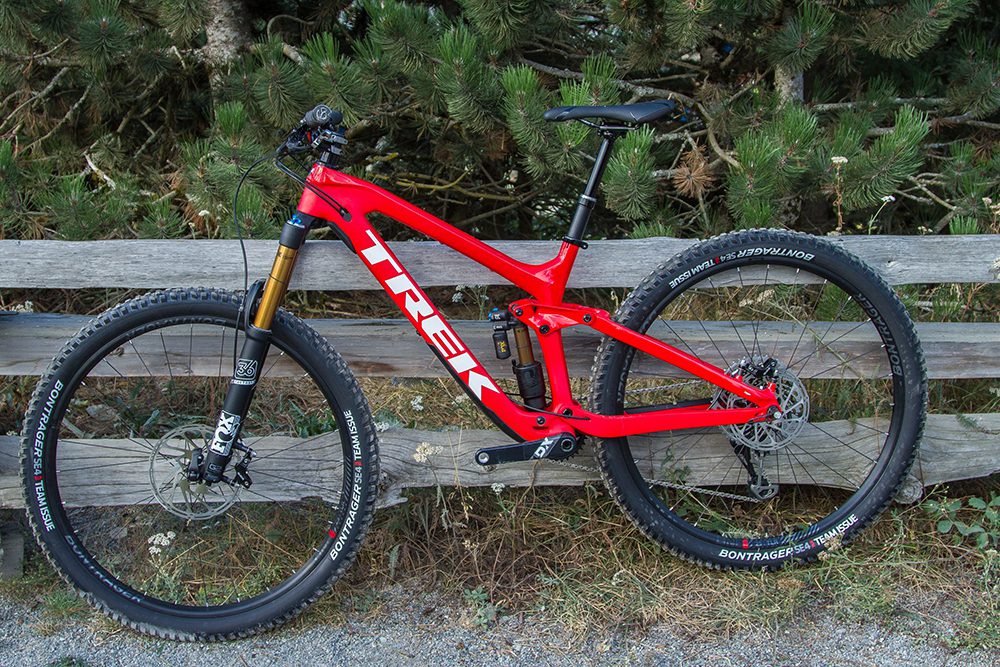
The move to 29” wheels should make a noticeable difference rolling through gnarly terrain, and most racers will be able to adjust to the slightly different handling that comes with bigger wheels fairly quickly. The head angle stays the same as the older version of the bike which is a good thing, but the wheelbase grows by 0.6” to help smooth out rough spots on the race course even more.
Adding a travel adjust fork to the new version is a great idea – the previous iteration of the bike was a bit of a handful on climbs. All in all, the 2017 Slash shows a lot of promise. Expect to see quite a few of them on the race course next season.
